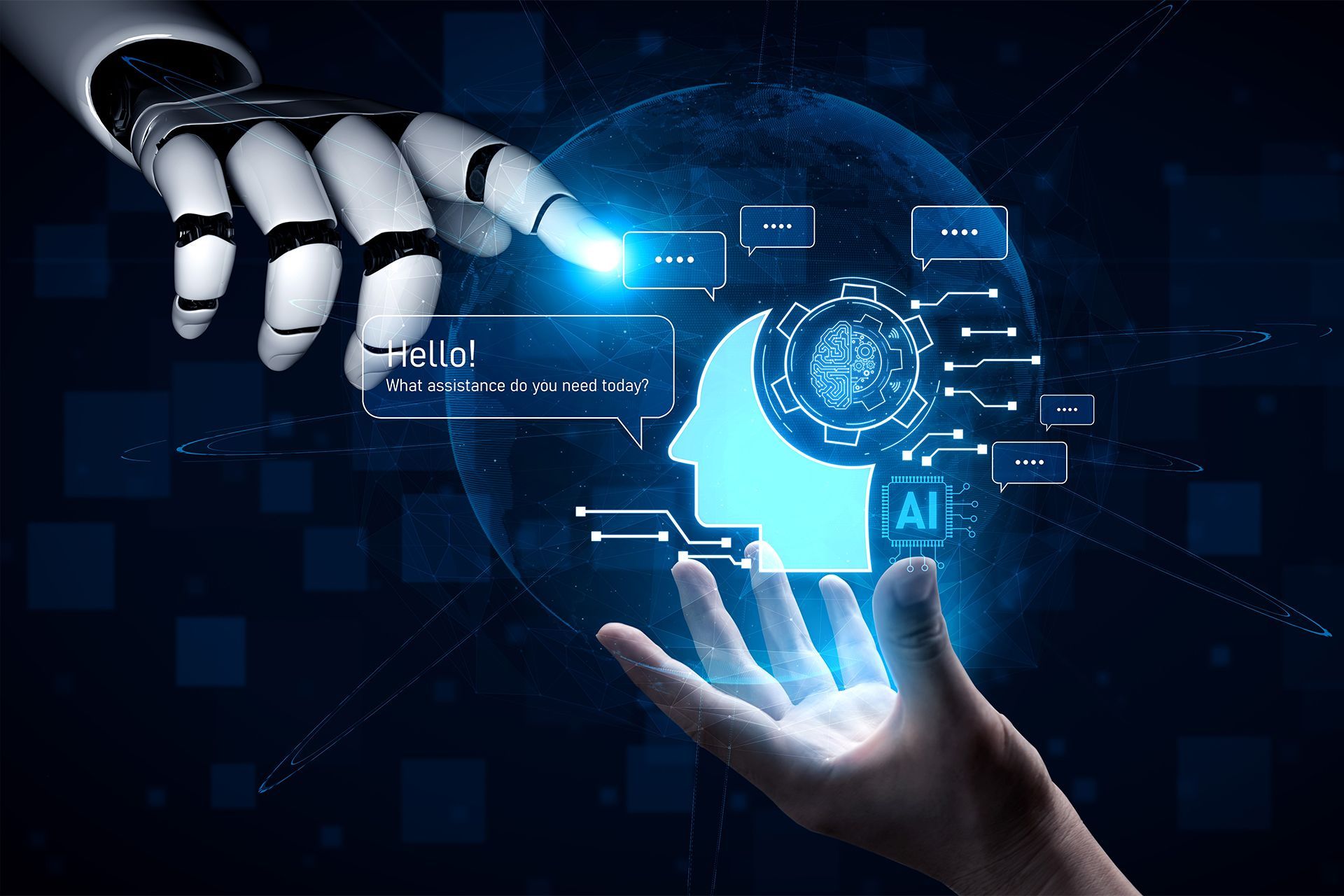What Is an AI Chatbot and How Does It Work?

More than 80% of businesses plan to use AI chatbots for customer service by 2025. That’s a huge number! AI chatbots are quickly becoming a big part of our everyday lives—helping us order food, answer questions, and even book appointments.
But what exactly is an AI chatbot? And how does it work?
Let’s break it down in a way that’s easy to understand.
What Is an AI Chatbot?
An AI chatbot is a computer program that can talk to people just like a human. It uses artificial intelligence (AI) to understand what someone says and respond in a smart way. Instead of just giving robotic or pre-written answers, AI chatbots learn from conversations and improve over time.
You’ve probably seen a chatbot pop up in the corner of a website. It might say something like, “Hi there! How can I help you today?” That’s an example of a chatbot in action.
Why Are AI Chatbots So Popular?
Businesses, schools, and even hospitals use AI chatbots to save time and give people fast answers. Here are some reasons why:
- They work 24/7 – Chatbots never sleep, so you can get help anytime, even at midnight.
- They answer fast – No need to wait on hold for
customer support.
- They save money – Companies don’t need to hire as many support agents.
- They help many people at once – Chatbots can talk to hundreds of people at the same time.
How Does an AI Chatbot Work?
Let’s take a closer look at how these clever bots work behind the scenes.
Step 1: Understanding the Question (Natural Language Processing)
First, the chatbot must understand what the user is saying. This is done using something called Natural Language Processing (NLP). NLP helps the chatbot read and make sense of the words, even if they’re spelled wrong or out of order.
Example: If you type, “Wherez my order?” the chatbot uses NLP to figure out you meant, “Where is my order?”
Step 2: Thinking of an Answer (Machine Learning & AI)
Once the chatbot understands the question, it needs to find the best answer. Smart chatbots use machine learning to do this. That means they’ve been trained using tons of past conversations and data to make good decisions.
Some AI chatbots even learn as they go. They get better by studying new questions and feedback from users.
Step 3: Replying to the User (Natural Language Generation)
Finally, the chatbot writes a response using Natural Language Generation (NLG). This makes the reply feel natural, like it’s coming from a real person.
Example:
User:
“How late are you open?”
Chatbot:
“We’re open until 9 PM today. Let me know if you need anything else!”
Different Types of Chatbots
Not all chatbots are the same. Here are the most common types:
1. Rule-Based Chatbots
These follow simple rules. They reply using pre-written answers.
Example: “Press 1 for support. Press 2 for billing.”
2. AI-Powered Chatbots
These are smarter. They use AI and machine learning to understand and respond.
Example: “Hi Sarah, your package will arrive by 5 PM today.”
3. Voice Chatbots
These chatbots speak and listen, like Alexa or Siri.
Where Are AI Chatbots Used?
AI chatbots are used in almost every industry. Here’s where you might find one:
- Customer Service – Answering questions or tracking orders.
- Healthcare – Booking doctor
appointments or giving health tips.
- Education – Helping students with homework or school info.
- Banking – Checking balances or blocking lost cards.
- Retail – Suggesting products or handling returns.
Benefits of Using AI Chatbots
AI chatbots make life easier—for both people and businesses. Here’s how:
- Saves Time: No more waiting on hold.
- Better Communication: Quick and simple answers.
- Saves Money: Fewer support costs.
- Personalized Help: Chatbots can remember your name, past orders, or preferences.
- Improves Sales: Chatbots guide customers to what they need.
What Makes a Good AI Chatbot?
Not all chatbots are helpful. The best AI chatbots have:
- Fast Response Times – No one likes to wait.
- Accurate Answers – They should understand and reply correctly.
- Friendly Language – The tone should feel human and polite.
- Learning Ability – They should improve with time.
- Easy to Use – Simple design and easy to chat with.
ChatArm is a great example of a chatbot platform that delivers all these features. It helps businesses in many industries qualify leads, support customers, and grow faster.
Are There Any Challenges With AI Chatbots?
Yes, even smart bots have limits. Some challenges include:
- Understanding complex questions: Chatbots may struggle with slang, jokes, or very detailed requests.
- Privacy concerns: It’s important for chatbots to protect users’ personal data.
- Over-relying on bots: Some problems still need human support. A good system knows when to hand things over to a real person.
The Future of AI Chatbots
The future of AI Chatbots looks bright! As AI keeps improving, chatbots will get even smarter. We may see:
- Chatbots that understand emotions (like knowing when you're frustrated).
- Voice-powered bots everywhere (from TVs to cars).
- Bots that can solve more complex problems on their own.
Companies like ChatArm are leading the way by building smarter, faster, and more helpful AI chatbot systems.
Final Thoughts
AI chatbots are changing the way we live and work. They’re fast, smart, and always ready to help. Whether you’re a business owner or a curious student, knowing how chatbots work can help you make the most of this amazing technology.
Ready to boost your business with a smart AI chatbot? Visit ChatArm and schedule your free demo today!
FAQs: What People Ask About AI Chatbots
What is an AI chatbot?
An AI chatbot is a smart computer program that can talk to people and answer questions using artificial intelligence.
How does an AI chatbot work?
It uses Natural Language Processing to understand the question, machine learning to find the best answer, and Natural Language Generation to reply in a human-like way.
Are chatbots only for businesses?
No! Chatbots are used in schools, hospitals, and even for fun on social media.
Can chatbots replace humans?
Not completely. Chatbots are great for simple tasks, but some situations still need a human touch.
Is it safe to use a chatbot?
Yes, as long as the chatbot follows good privacy rules and doesn’t ask for personal info like passwords.
Disclaimer: The information on this website and blog is for general informational purposes only and is not professional advice. We make no guarantees of accuracy or completeness. We disclaim all liability for errors, omissions, or reliance on this content. Always consult a qualified professional for specific guidance.






